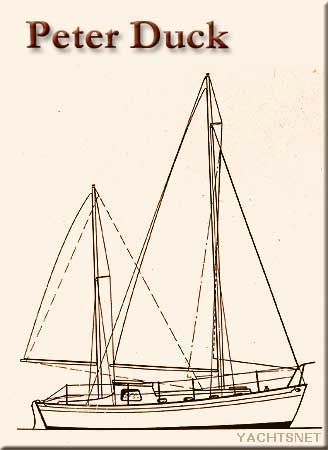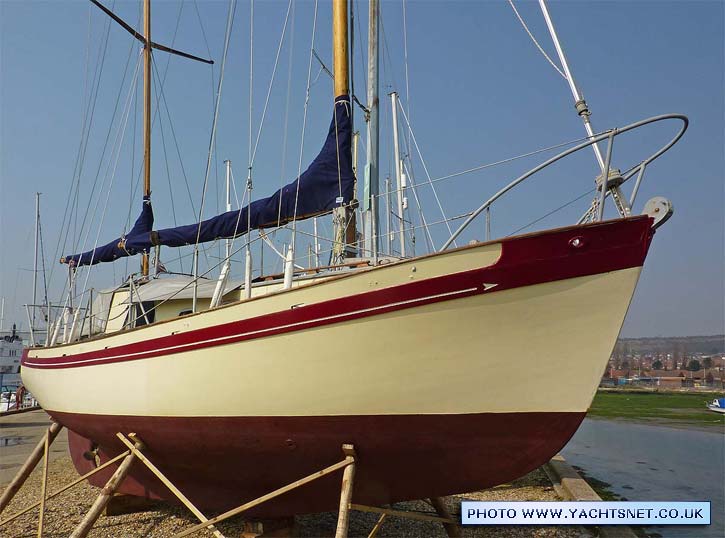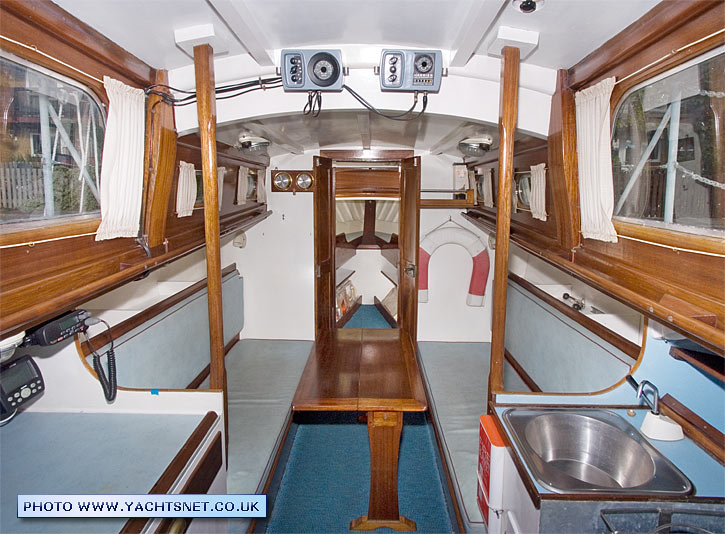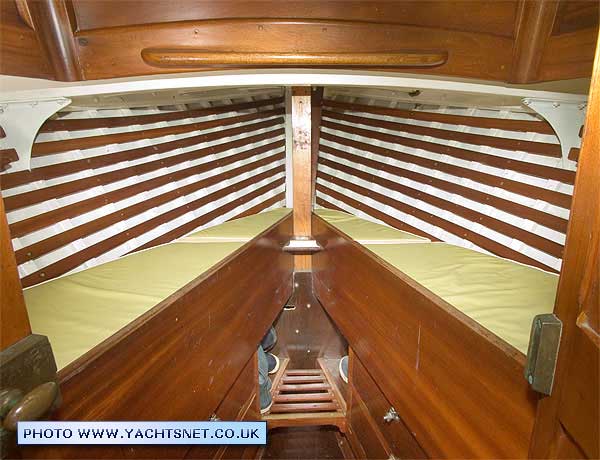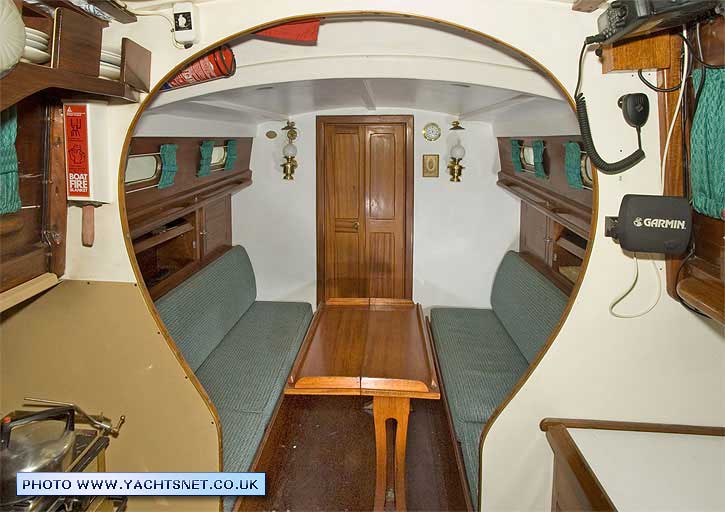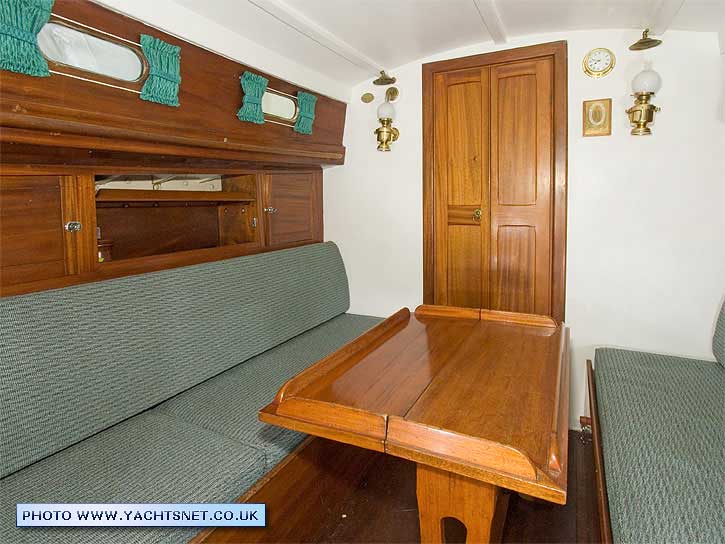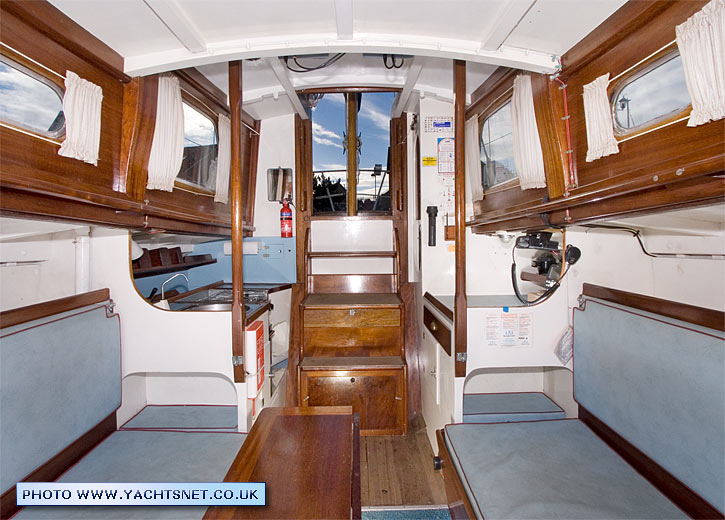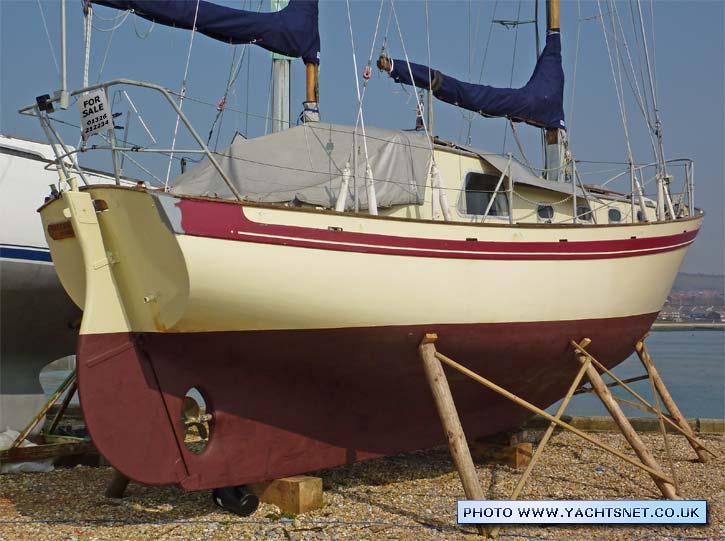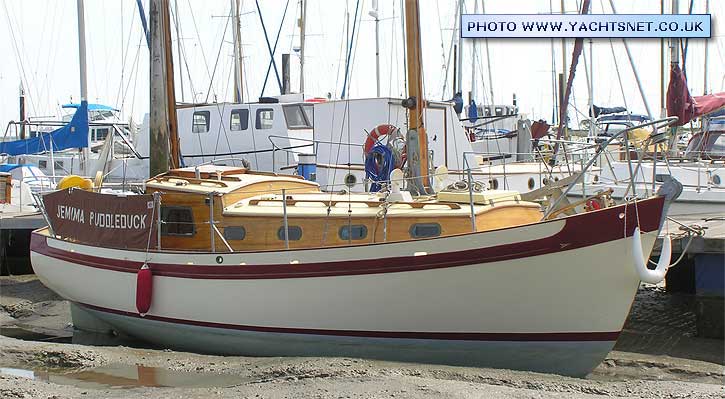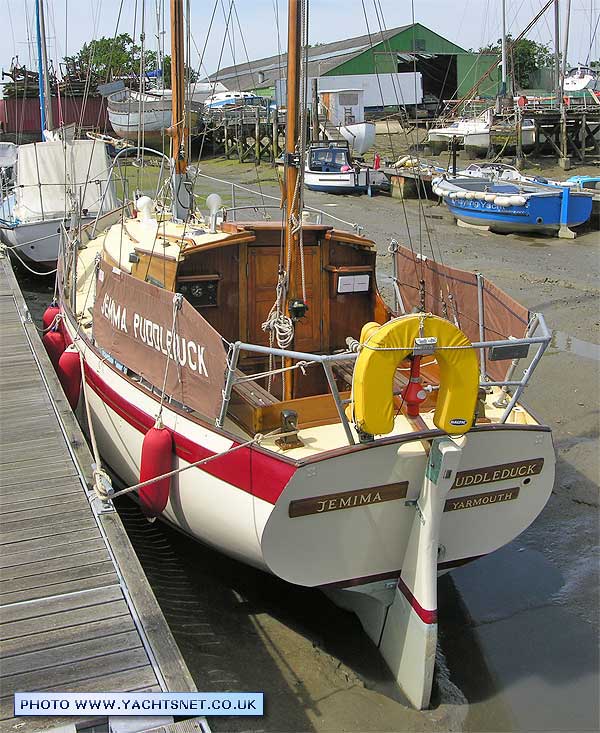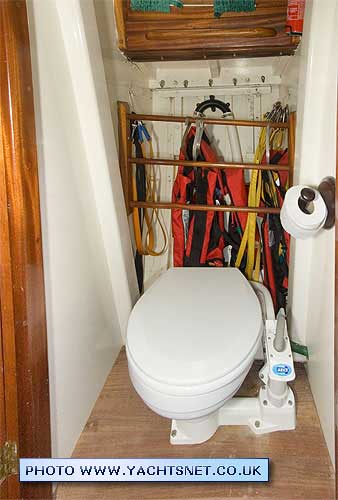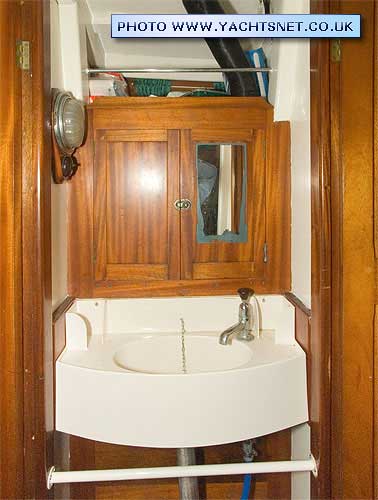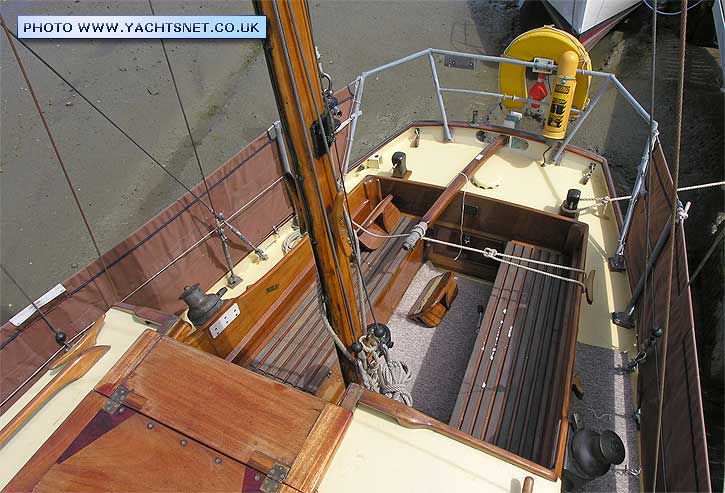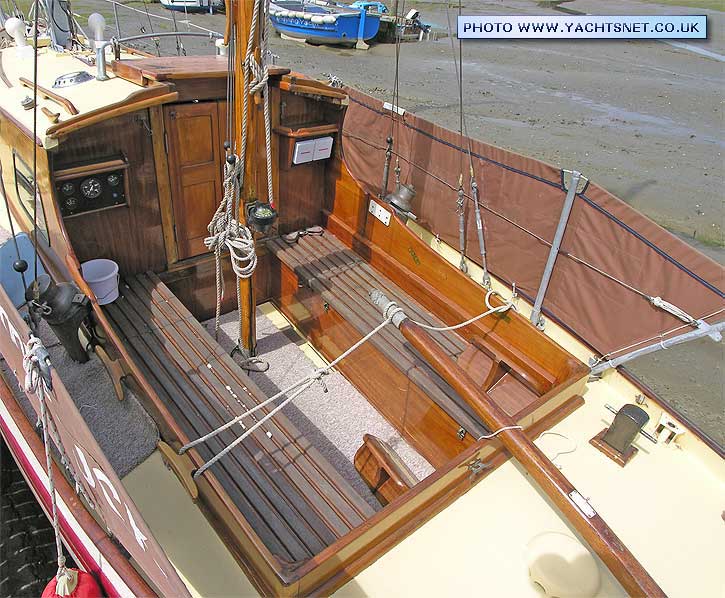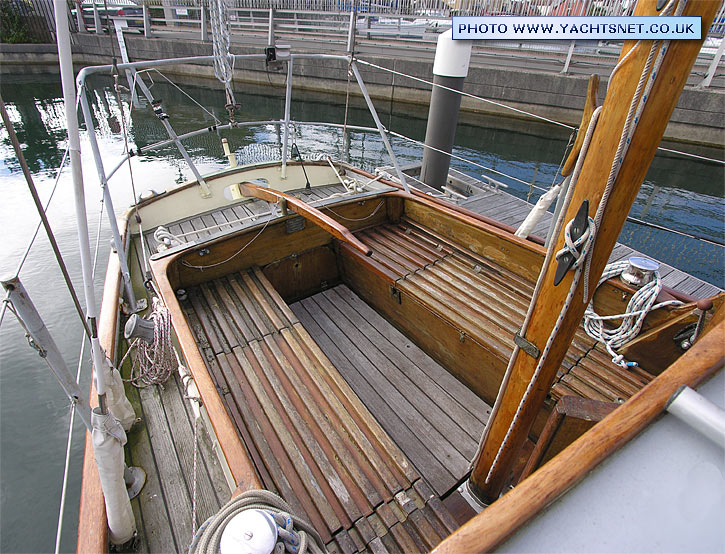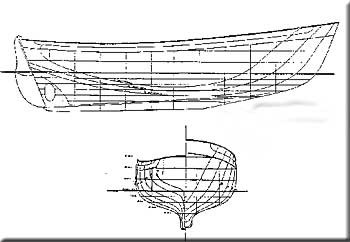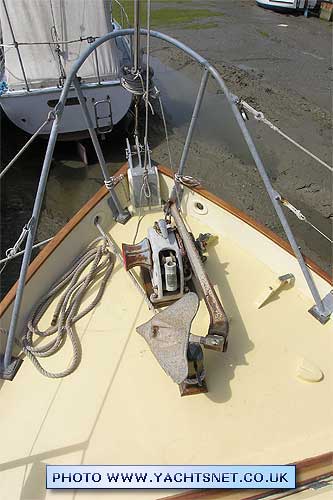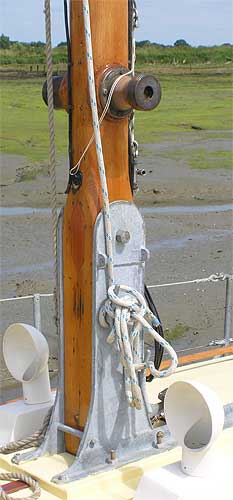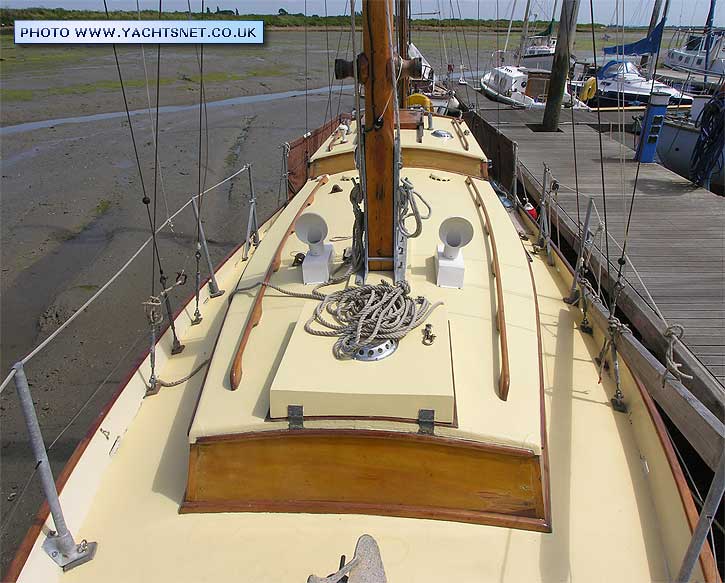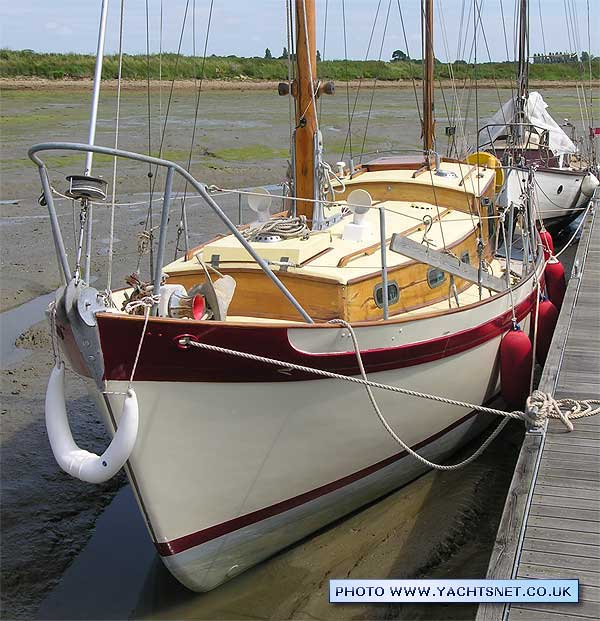| |
|
|
|
|
|
|
|
| © Yachtsnet Ltd. 2000/2025 |
|
|
|
| |
|
|
Yachtsnet's
archive of boat details and pictures
|
| |
The following information and photographs are
displayed as a service to anyone researching yacht types. HOWEVER THE PHOTOGRAPHS AND TEXT ARE COVERED BY COPYRIGHT, AND MAY NOT BE REPRODUCED WITHOUT THE PERMISSION OF YACHTSNET LTD. Details and photographs
are normally based on one specific yacht, but could be a compilation.
No reliance should be placed on other yachts of the same class being
identical. Where common variations exist, we have endeavoured
to indicate this in these archive details. |
Peter Duck ketch |
Brief details |
Builder |
mostly by Porter & Haylett, Great Yarmouth |
A Laurent Giles classic,
Peter Duck ketches are solidly built shoal draught motor-sailers.
As with any traditionally built wooden boat, values depend very
much on condition. |
LOA |
28' 6" |
Sail area |
325 sq ft |
LWL |
25' 0" |
Rig |
ketch |
Beam |
9' 0" |
Cabins |
2 |
Draught |
3' 9" |
Berths |
4 |
Displacement |
5.75 tons |
Engine |
various |
Ballast |
iron keel and lead trimming ballast total 2 tons |
BHP |
40 - 50 |
Keel type |
Long keel |
|
|
A classic design from Laurent Giles, the Peter
Duck class evolved from an original yacht ( called "Peter
Duck" ) which was built for Arthur Ransome, the author
of 'Swallows & Amazons', etc.
About 40 Peter Duck ketches were built, most by Porter &
Haylett of Great Yarmouth. The detailed fit-out of
each was not always identical, these yachts being built to
order rather than a 'production' boat. Most appear to have been Cascover* sheathed from new, helping to keep the wooden hulls in good condition.
The Peter Duck design is well known for their passage-making
qualities and afford a remarkably dry cockpit in heavy weather.
The ketch rig makes for easy single-handed management.
* Cascover was a nylon cloth sheathing, glued with resorcinol glue, and popular in the 1950s/60s/70s as a means of putting a barrier coat on wooden hulls against gribble and teredo worm. It was normally professionally applied on new glued-spline carvel or plywood hulls, where movement between planks or ply panels was minimal. Fifty years on, original 'Cascovered from new' wooden hulls do generally seem to last well. |
|
|
|
